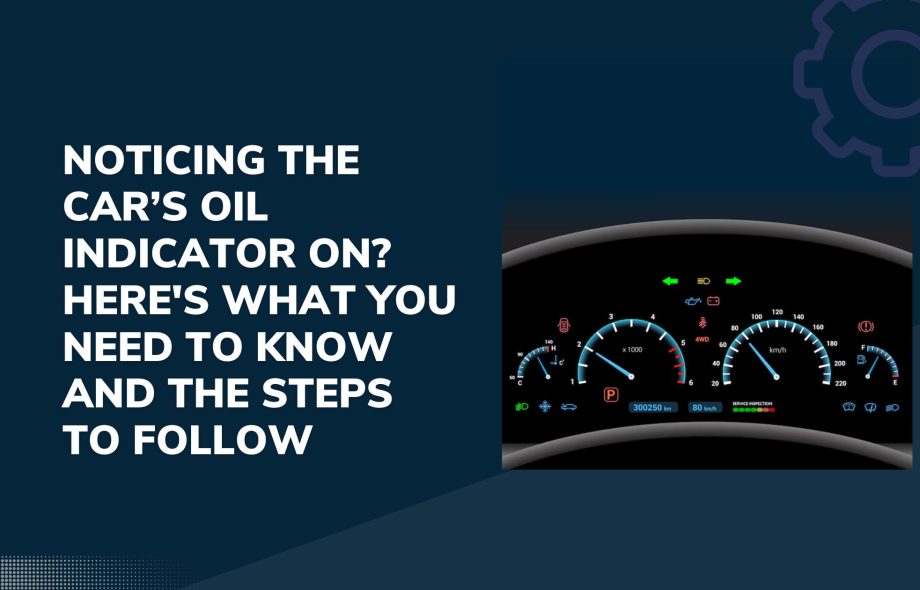So your dashboard oil light just turned on, and you have no idea what to do now! While the oil light doesn’t often pop up if you take good care of your car, if it does, you must know what needs to be done next.
When it comes to the oil light, it is usually on to indicate low oil levels. However, various other issues are related to an active engine oil light. various problems that can trigger this dashboard warning light.
In this blog, we will cover topics related to engine oil lights, including the top reasons the oil light is on, what measures to take and when to change the oil.
Reasons the oil light is on
Audi mechanic Melbourne explains various problems that can trigger the dashboard oil warning light, which may include:
-
Low oil level
Most commonly, an engine oil light will turn on to indicate there’s not enough oil in the car. All you need to do is check the oil and get it refilled.
-
Low oil pressure
For a car to run optimally, it must have sufficient oil pressure. An active engine oil light can indicate a low oil pressure in the vehicle. In most cases, the oil pump is unable to circulate the oil with the required pressure if it has been worn out. To prevent engine damage because of low oil pressure, you should have your car inspected as soon as possible.
-
Faulty oil sensor
A probe in the oil channel triggers the oil light, but sometimes, a foreign particle can enter and send confusing signals to the car’s computer. If your oil levels are fine, but the light is on, replacing the probe might be a good idea.
-
Engine overheating
When the oil runs low or thin, it can cause the engine to get extremely hot, which can turn on the oil light. To verify this, check the temperature gauge.
-
Dirty oil filter
Oil filters are an important component, as they maintain the engine’s oil pressure. An outdated or clogged oil filter can cause the pressure to rise and limit oil flow. Also, a broken relief valve on the filter can increase the oil pressure. To prevent this, make sure to replace the oil filter at every service.
How long can I drive with my oil light on?
If you see the oil light come on, you should not continue to drive your car. According to Volkswagen service Melbourne experts, you should not drive more than 80 kms when the engine warning light is on.
Whatever the reason for an active oil warning light, continuing to drive your vehicle can cause serious damage, even engine failure. This may require you to get a complete engine replacement.
What should you do if the oil warning comes on?
In such a case, you should pull over and turn off the engine immediately. Check the oil level in your engine and refill it if that is causing the oil warning light to come on. If you are unable to detect the issue, it’s best to take your vehicle to a nearby mechanic and have it checked. They will inspect the engine, diagnose the issue and make any necessary repairs.
How to prevent the oil light from coming on?
Here are some tips to help you prevent the oil light from turning on:
-
Regular car servicing
Keeping up with regular maintenance is the best way to prevent engine problems. This includes regular oil changes, which should be done according to your vehicle’s manufacturer’s recommendations.
Automotive experts generally recommend changing the engine oil every 8000 to 12000 kms or every six months, whichever comes first. Regular oil changes ensure there is enough clean engine oil to lubricate all the moving parts.
-
Watch for signs of trouble
Always keep a check on signs of trouble, such as unusual smells or noise from the engine or reduced performance. If you notice any such signs, it is advisable to book an inspection with a professional technician.
Early detection of potential problems can help you act immediately and prevent further damage to the engine and its components.
-
Check your engine oil regularly
Besides regular servicing, you should keep a check on your car’s oil level on your own. This will prevent the warning light from coming on and ensure your engine has sufficient oil every time you drive the car. Ideally, you should check the engine oil level once a month.
To check the engine oil level on your own, use the dipstick as per the instructions given in your manufacturer’s manual.
If you notice e a low oil level, refill it immediately. Ensure you’re using the right oil type for your vehicle by consulting your European car mechanic in Melbourne.
Understanding that overfilling can lead to issues like increased engine pressure is also crucial. Avoid adding excess oil and maintain the level within the designated range on the dipstick, between the minimum and maximum marks.
Conclusion
Considering the importance of engine oil for your vehicle and its performance, you should always monitor oil levels in your car. Driving a car with an active engine oil warning light can cause great harm to your vehicle, causing you to spend a lot on repairs and replacements. However, with regular maintenance and a little diligence, you can ensure your engine’s best form forever.
 :
https://www.bcsprestige.com.au/
:
https://www.bcsprestige.com.au/

